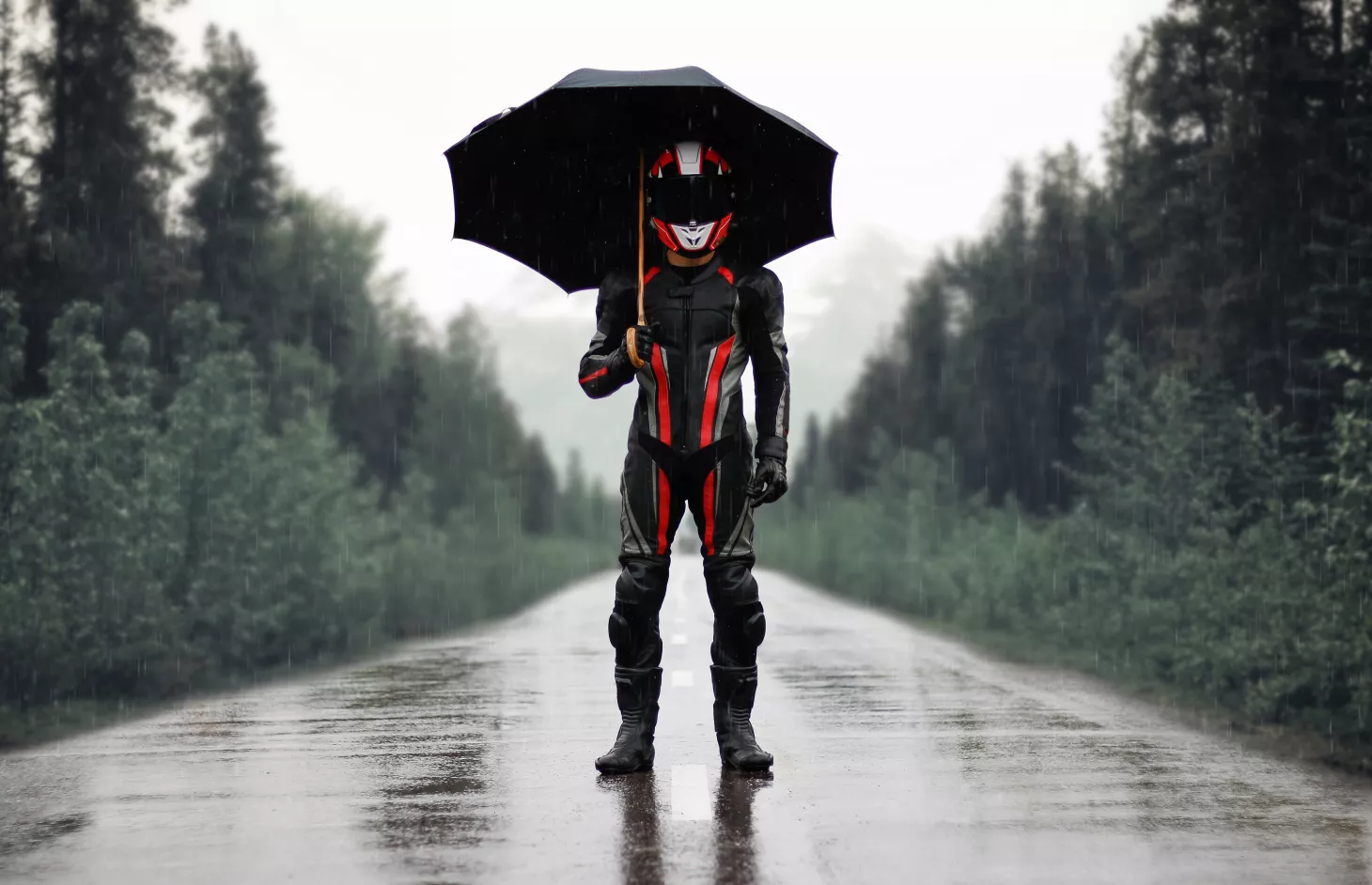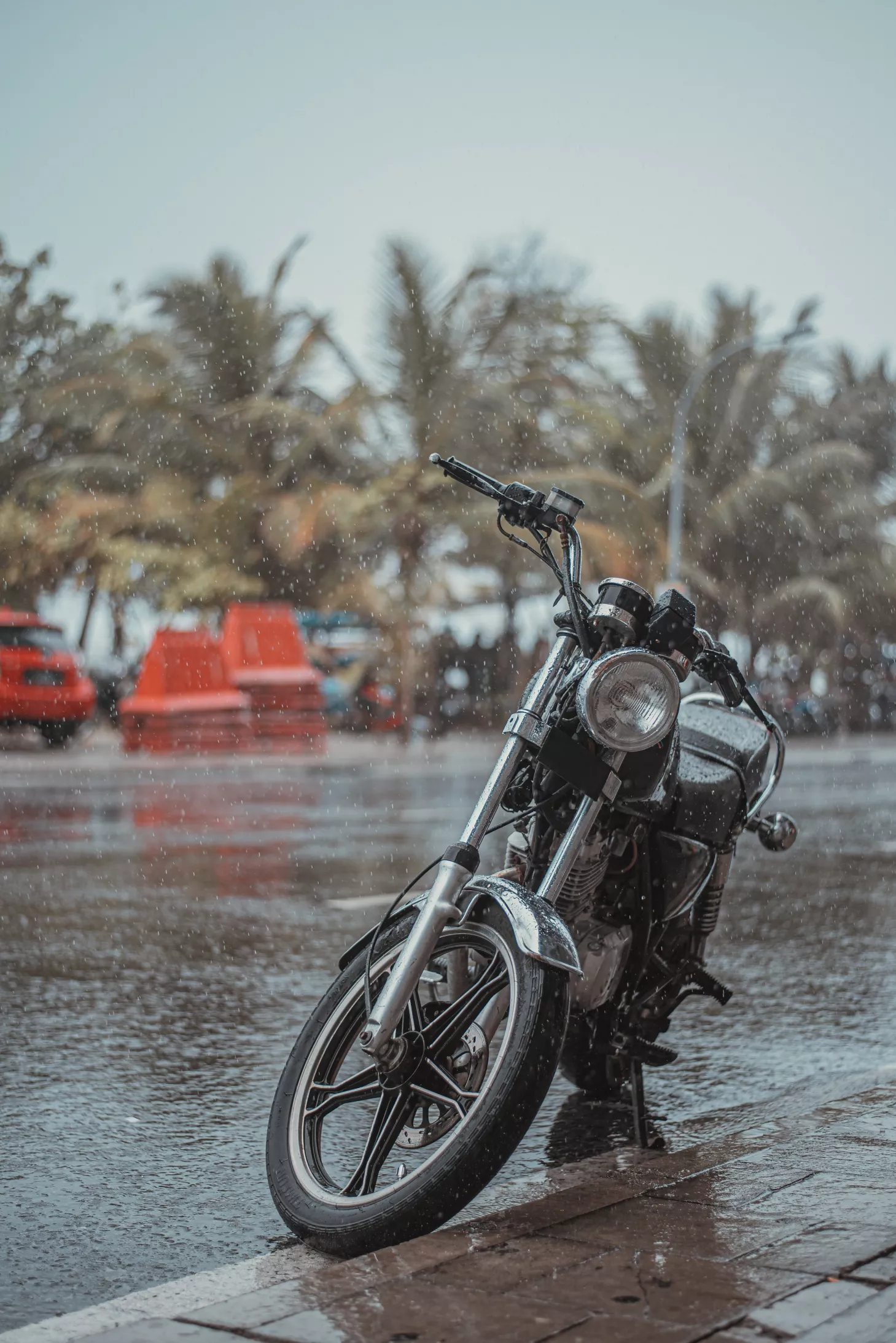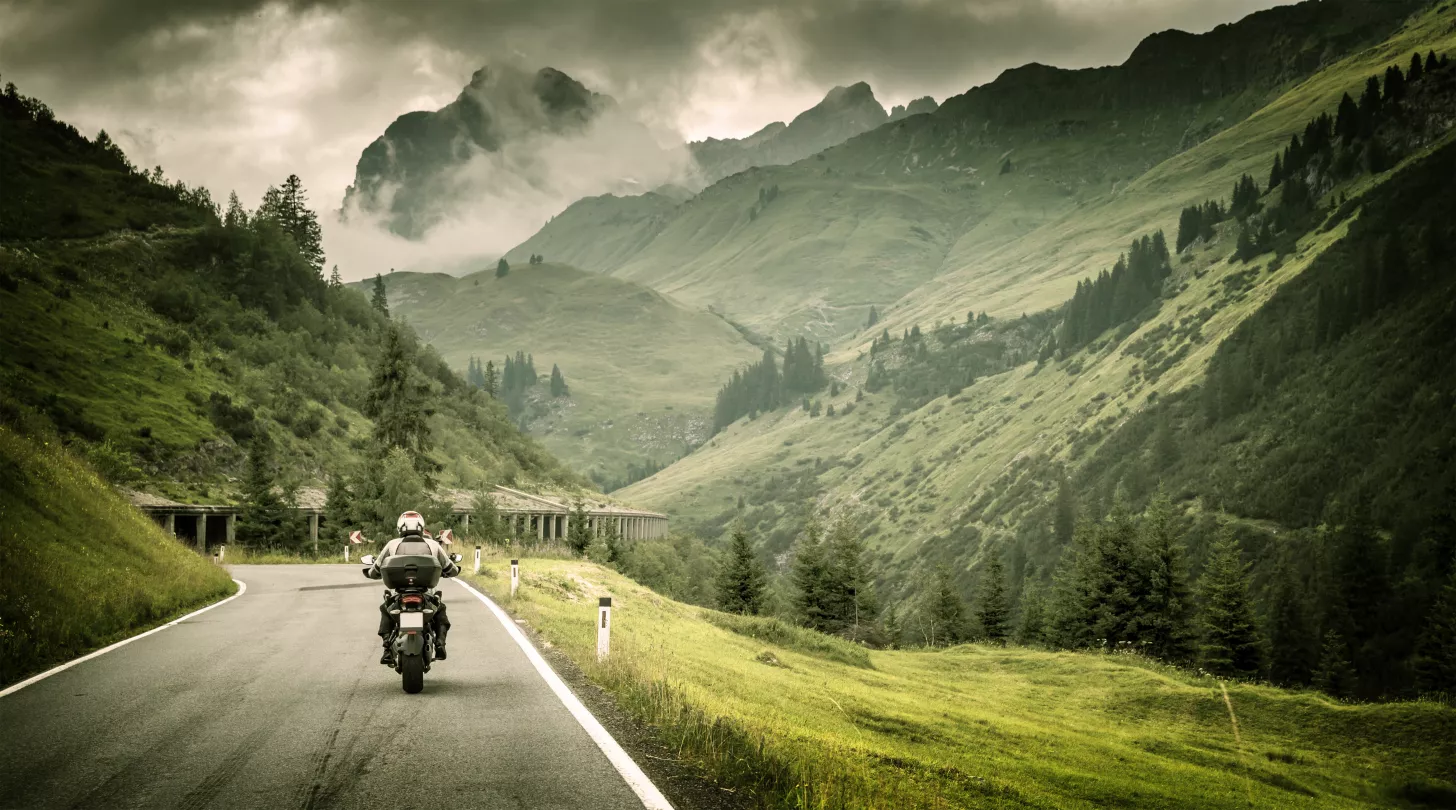How to prepare
Riding safely in the rain
The right clothes make all the difference
What to do in crosswinds?
Expert advice: Choosing the right material!
You’ve probably experienced this: You finally want to get out on the road again and enjoy your free time on your motorbike. But the weather is interfering with your plans. It's even more annoying when it happens unexpectedly in the middle of your ride or tour. Many have had to learn the hard way that the weather is always good for surprises - especially the dreaded April weather or the short but violent summer thunderstorms are unpredictable travel companions.
The good news - you can get prepared! We have 5 tips for you for riding a motorbike in the rain:

1. Preparation is half the battle
This might sound like a pretty straightforward phrase, but it is actually a simple tip with a big impact. Even though the weather is often unpredictable, the weather forecasts on various websites or smartphone apps are becoming increasingly accurate. Quickly checking the forecast can often avoid a messy and wet experience from the very start. It is important to not only check the weather at your point of departure, but also at your destination. This way you can adjust your route to avoid getting caught in the rain or postpone your trip if the bad weather can’t be avoided. On top of this, we advise you to plan in advance possible spots that offer shelter and allow you to take a break if the rain gets too heavy. Especially on new and unfamiliar routes, there is nothing more annoying than being in the middle of nowhere during a summer thunderstorm...
2. Riding safely in the rain - what to keep in mind
No matter if you were ill-prepared or fully aware that it was going to rain: once you ride in the rain, your own safety is the most important thing. A few aspects play an important role here. First of all, the tyres. These should be in a good condition for your ride in the rain or on wet roads. In combination with water, bad, old or worn out tyres become a slippery affair. Next, it is important to adapt your riding style accordingly. Defensive and anticipatory riding are the two most important things. What’s more: in the rain, pay even more attention than usual to the condition of the road surface and avoid slippery areas such as manhole covers, tram tracks, bitumen stretches, road markings and so on.
If you happen to end up on such a slippery spot, you should avoid braking and accelerating and ride across the obstacles in an upright position at as obtuse an angle as possible. It's almost too obvious, but it needs to be mentioned in this context - reducing speed and increasing attention is a must in the rain!

3. There is no such thing as bad weather, only bad clothing.
Yes, your mother or grandmother might have said that. But these words of wisdom are true. Good rain gear, a high-quality helmet (and even more importantly a good visor), waterproof gloves and shoes are all factors that you can influence yourself. The better your equipment, both in terms of quality and fit, the more comfortable it is to ride in the rain. Especially the visor is tricky in the rain, as nothing less than your own visibility is at stake here. An anti-fog lens, a visor spray or a wiper for the finger will ensure better visibility!
4. Crosswinds - What to do?
Rain often also means that there is wind. Particularly crosswinds are a serious, invisible danger for motorcyclists. It is therefore good to know where you can expect these. You can never say for sure, but bridges often pose a danger. In any case, if you see a windbag next to the road, this is an alarm signal. There are also often warning signs with pictures of windbags. As a biker, you should pay special attention to these clues and always reduce your speed.
5. Expert advice: choose the right material!
Gore Tex® membrane suits are usually more expensive to buy, but they offer the most comfortable and reliable protection. You don't have to stop in order to put on your rain suit, but you can simply ride into the bad weather. It is also advisable to pay attention to the laminate versions and to choose one that doesn't get soaked and also dries again quickly. By the way, as an alternative to Gore Tex®, there are also other materials made of membranes with a high water column that also offer great effectiveness for riding in the rain. Specialist advice is highly recommended when making such a purchase. The material experts at Grötzmeier will be happy to advise you!
Enjoy your ride in any case and may you have no surprises in the rain!

